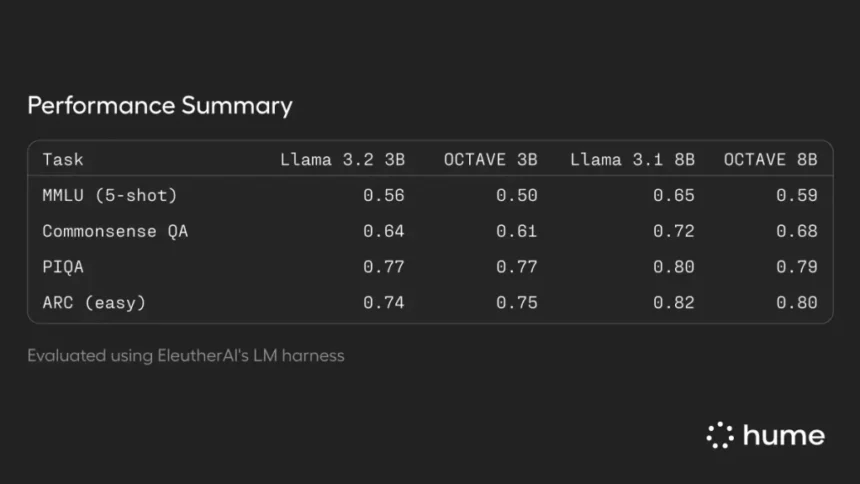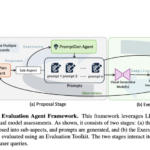

The evolution of speech and language technology has led to improvements in areas like voice assistants, transcription, and sentiment analysis. However, many models struggle to capture the nuances of human emotion and intent. These systems often focus on accuracy in tasks like transcription or translation, neglecting the emotional context that underpins effective communication. This gap limits their usefulness in areas where understanding human emotions is essential, such as mental health, customer support, and immersive virtual experiences. As the need for emotionally aware AI grows, there is a clear demand for models capable of both understanding and generating speech with emotional depth.
To address these challenges, Hume AI has introduced OCTAVE (Omni-Capable Text and Voice Engine), a speech-language model designed to balance linguistic accuracy with emotional understanding. OCTAVE combines the capabilities of Hume AI’s EVI 2 speech-language model with those of advanced systems like OpenAI’s Voice Engine, ElevenLab’s TTS Voice Design, and Google DeepMind’s NotebookLM. By leveraging these capabilities, OCTAVE aims to improve the authenticity and richness of AI-driven interactions. Its potential applications include virtual assistants, interactive storytelling, and tools to support emotional well-being.
Technical Details and Benefits
OCTAVE employs a multi-modal neural architecture that integrates acoustic, linguistic, and emotional signals. It has been trained on diverse datasets of over a million emotional speech samples, each annotated with detailed labels to reflect the type and intensity of emotions. This training enables the model to detect subtle emotional cues, such as sarcasm, joy, or frustration, that are often missed by traditional models.
A notable feature of OCTAVE is its ability to perform well in zero-shot and few-shot learning scenarios. This allows the model to adapt to new emotional contexts or languages with minimal additional data, enhancing its versatility. Furthermore, OCTAVE is designed for efficient deployment on edge devices, making it suitable for real-time applications where computational resources and latency are critical concerns.
Results and Insights: OCTAVE’s Performance Metrics
Hume AI has shared data on OCTAVE’s performance, providing detailed comparisons against leading models such as Llama. Evaluated using EleutherAI’s LM harness, OCTAVE demonstrated competitive results:

While OCTAVE 8B trails slightly behind Llama 3.1 8B in certain benchmarks like MMLU and PIQA, it delivers comparable or superior performance in others, such as ARC (easy) for its 3B variant. These results highlight OCTAVE’s strong adaptability and efficiency, particularly given its focus on emotional understanding alongside linguistic precision.
These findings underscore OCTAVE’s ability to create more engaging and emotionally aware human-computer interactions.
Conclusion: A Step Toward Emotionally Intelligent AI
Hume AI’s OCTAVE represents an important development in speech-language modeling by addressing both linguistic and emotional dimensions. Its ability to detect and generate emotional nuances opens the door to more meaningful applications, from supporting mental health to improving customer interactions and creating immersive virtual experiences. By integrating the strengths of leading technologies, OCTAVE sets a precedent for future AI systems that aim to connect with users on a deeper level. This model offers a glimpse into a more empathetic and inclusive technological future, where AI enhances, rather than replaces, human communication.
Check out the Details. All credit for this research goes to the researchers of this project. Also, don’t forget to follow us on Twitter and join our Telegram Channel and LinkedIn Group. Don’t Forget to join our 60k+ ML SubReddit.
The post Hume AI Introduces OCTAVE: A Next-Generation Speech-Language Model with New Emergent Capabilities like On-The-Fly Voice and Personality Creation appeared first on MarkTechPost.




 Trending: LG AI Research Releases EXAONE 3.5: Three Open-Source Bilingual Frontier AI-level Models Delivering Unmatched Instruction Following and Long Context Understanding for Global Leadership in Generative AI Excellence….
Trending: LG AI Research Releases EXAONE 3.5: Three Open-Source Bilingual Frontier AI-level Models Delivering Unmatched Instruction Following and Long Context Understanding for Global Leadership in Generative AI Excellence….

